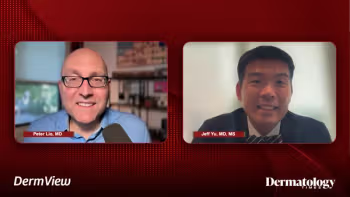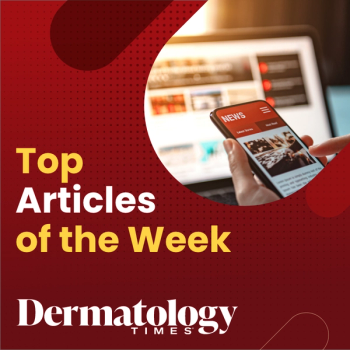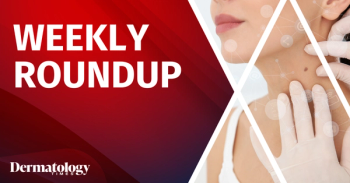
Exploring Varying Doses of Oral Isotretinoin for Facial Warts and its Impact on Quality of Life
Key Takeaways
- The 0.5 mg/kg/day isotretinoin dose showed a higher complete response rate than the 0.3 mg/kg/day dose, with a median wart reduction of 50.
- Common adverse events included cheilitis, dry skin, pruritus, and dry eyes, with no significant difference between dosage groups.
A new study reveals the effectiveness of two isotretinoin doses for treating recalcitrant facial flat warts, enhancing quality of life and reducing anxiety.
A recent trial compared 2 doses of oral isotretinoin for recalcitrant facial flat warts.1 Quality of life, including levels of anxiety and depression, was also assessed. Up to 30% of flat facial warts may become recalcitrant, making clinical treatment difficult.2 This is the first randomized trial that evaluates the efficacy of isotretinoin therapy for facial flat warts along with psychiatric symptoms.
The double-blind, randomized study lasted 12 weeks at Mexico City’s “Dr. Ladislao de la Pascua” Dermatologic Center. The trial was conducted between June 2022 and July 2023 and included 40 adult participants (28 females and 12 males). Patients had been previously treated with retinoids, 5-fluorouracil, imiquimod, and/or cryotherapy for at least 3 years, making the warts recalcitrant. The most common prior therapy was tretinoin. Isotretinoin 0.3 mg/kg/day was given to 21 patients, while 19 patients took isotretinoin 0.5 mg/kg/day. Clinical evaluation occurred at baseline and days 28, 56, and 84
Investigators evaluated the reduction of lesions along with adverse events, serologic changes, and quality of life using the 10-item Spanish Dermatology Life Quality Index (DLQI) at the beginning and end of the follow-up. The assessment covered disease symptoms and pain, emotions, daily activities, clothing, social and leisure activities, physical activity, education, sexual behavior, and personal relationships with friends, relatives, and romantic partners. The 21-question Beck Anxiety Inventory (BAI) was also utilized, in which a score between 1 and 10 is considered normal. Laboratory tests of blood cell count, liver function, lipid profile, and creatine phosphokinase (CPK) levels were carried out as well.
In the isotretinoin 0.3 mg/kg/day group, 35% of participants had a complete response while 66% had a partial response. The median reduction in the number of warts was 28. Conversely, 73.7% of the patients taking isotretinoin 0.5 mg/kg/day had a complete response and 26.31% had a partial response (p = 0.015). The median reduction in the number of warts was 50. This complete response with the higher dose is similar to what was reported in past studies.
The Relative Risk (RR) of the 0.5 mg/kg/day dose compared to the 0.3 mg/kg/day dose was 2.1053, 95% CI 1.0936–4.0526. At the 4-month follow-up, 3 patients in the 0.3 mg/kg/day dose group and 1 patient in the 0.5 mg/kg/day dose group had a recurrence of lesions, despite reaching complete response earlier in the study.
The most frequent adverse event was cheilitis, which was present in 95% of cases. Dry skin (77%), pruritus (59%), and dry eyes (56%) were also reported. This was observed in both groups, with no significant difference between the cohorts. None of the patients discontinued treatment and 100% treatment adherence was noted. The isotretinoin 0.5 mg/kg/day group did have elevated levels of aspartate aminotransferase and total bilirubin at various points of the study, but this was not significant when compared to the other cohort.
Improved quality of life based on DLQI was observed in both groups by more than 80% (p = 0.0001). BAI was reduced in both groups. A difference in BDI score was observed in the 0.3 mg/kg/day cohort. There were no significant differences between groups in the baseline and at the end of the follow-up. Future trials should implement a follow-up period longer than 4 months. Additionally, controlled studies are needed to support the use of isotretinoin in pediatric patients.
No matter what dosage a patient is receiving, the authors stressed close monitoring for those who are at high risk of developing psychiatric symptoms. Those receiving the higher administration should be aware of any additional risks or adverse effects.
“It is important that all patients receiving oral isotretinoin at a dose of 0.5 mg/kg/day be prescribed the application of emollients like petroleum gels, petroleum jelly, or saline on the nares, use of ocular lubricants, sunscreen, and regular checkups and blood test,” the authors wrote.
References
1. Olguín-García MG, Peralta-Pedrero ML, Morales-Sánchez MA, Vega-Memije E, Lucio VMB. A Double-Blind Randomized Study of Two Doses of Oral Isotretinoin in the Treatment of Recalcitrant Facial Flat Warts: Impact on Quality of Life, Anxiety, and Depression. Health Sci Rep. 2025;8(4):e70684. Published 2025 Apr 21. doi:10.1002/hsr2.70684
2. Stender IM, Na R, Fogh H, Gluud C, Wulf HC. Photodynamic therapy with 5-aminolaevulinic acid or placebo for recalcitrant foot and hand warts: randomised double-blind trial. Lancet. 2000;355(9208):963-966. doi:10.1016/S0140-6736(00)90013-8
Newsletter
Like what you’re reading? Subscribe to Dermatology Times for weekly updates on therapies, innovations, and real-world practice tips.


















